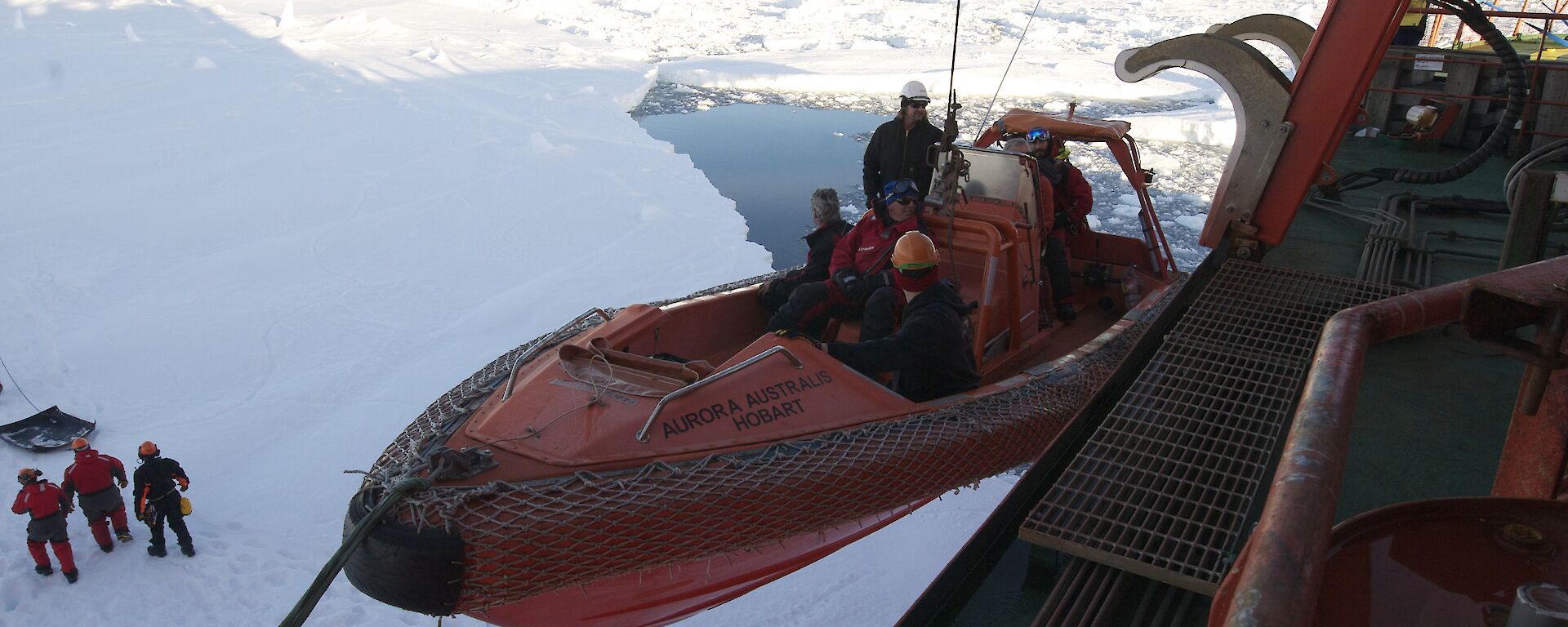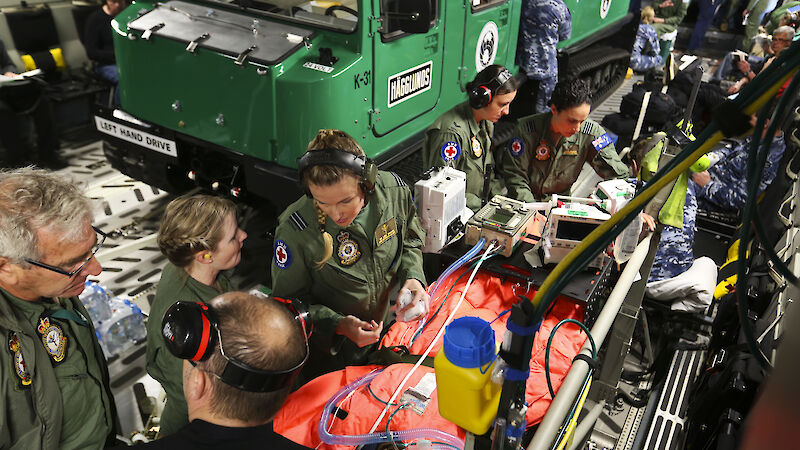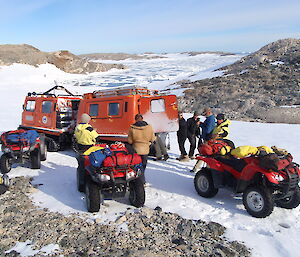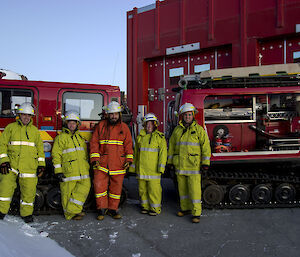There are 30 national programs with stations, bases and depots across the continent, each with their own emergency management framework. The Council of Managers of National Antarctic Programs (COMNAP) brings these nations together to facilitate and provide opportunities to build relationships, develop systems, and exchange information. In 2004, COMNAP members developed the ‘Framework and Guidelines for Emergency Response and Contingency Planning in Antarctica’ which was a major step forward in multi-national cooperation and interoperability.
Mutual aid from other national programs across the continent can be essential during any emergency response. The Australian, French, Italian, Chinese, Japanese, Russian and Indian national programs have created the East Antarctic Emergency Coordination Group, to share information on logistics and emergency coordination. It is a long-standing principle that all Antarctic nations assist each other in times of need, where practicable. The Antarctic community is relatively small, despite the number of nations involved, and assistance from other programs can be crucial for emergency response and evacuation across large geographical distances in such an extreme environment.
It is the remoteness of the Antarctic that makes search and rescue (SAR) a difficult proposition. The Australian SAR region covers an area nearly one-tenth of the world’s surface. This includes the majority of the six million square kilometres of the Australian Antarctic Territory. The Australian Maritime Safety Authority (AMSA) Rescue Coordination Centre (RCC) is responsible for any aviation response as far south as the South Pole, and maritime response to the coast of Antarctica. The RCC is also the national monitoring centre for the COSPAS-SARSAT satellite distress beacon system.
The Australian Antarctic Division has a memorandum of understanding with AMSA which outlines the cooperation arrangements for response to major environmental incidents and search and rescue support. The Antarctic Division is responsible for coordinating SAR for its own activities in the Antarctic, and where practicable, responding to land-based SAR incidents reported by AMSA, including distress beacons from a land-based source in the Australian Antarctic Territory. Given the huge area to cover, lack of resources and extreme weather, the reality is that any rescue could take a long time and would most likely be a multinational effort.
This was the case on Christmas day 2013, when a distress call was received from the MV Akademik Shokalskiy near Mawson’s Huts at Commonwealth Bay. The resupply at Casey station was well underway and refuelling had commenced, when the RSV Aurora Australis was tasked by the RCC to assist the vessel, along with other national Antarctic program ships, MV Xue Long, MV L’Astrolabe and USCGC Polar Star.
The Shokalskiy was unable to make its way out of the pack ice and was being threatened by icebergs, with the possibility of having to abandon ship. It took five days for the Aurora Australis to arrive on scene, but it was unable to penetrate the thick sea ice to assist in breaking the ship out. Seven days after getting stuck, 52 passengers were transferred from the Shokalskiy to the Aurora Australis using a Chinese KA32 helicopter, after a sea ice landing pad was created close to the ship. This was a truly multi-national response with the national programs of Australia, China, France and the United States sending assets to assist the vessel.
The Australian Antarctic Program works on a strategic (tactical) operational model, with coordination at the level appropriate to the size of the incident. During incidents that require logistical coordination, family liaison and media management, the Crisis Management and Recovery (CMR) team at Head Office in Kingston, Tasmania is activated. The CMR team not only manages overarching strategic response to the incident but also the logistical implications and season recovery for the Antarctic Program. On station and voyages, an Incident Management Team is stood up using the Australasian Inter-service Incident Management System. Each station has a multi-disciplinary Emergency Response Team that responds to fire, SAR, fuel spill and medical incidents. Rostered teams of six expeditioners, led by a Team Leader, are on-call for a period of usually two weeks. A Fire Chief and SAR Leader are also chosen from the wintering team and are responsible for continuation training, maintaining equipment and team rostering.
Prior to deploying to Antarctica, wintering expeditioners receive two weeks of emergency response training in incident management, fire, and SAR. Some expeditioners may have developed prior skills sets with fire and emergency services, or on previous deployments, however most will be new to emergency response. When they arrive in Antarctica, in addition to survival and field travel training, they get a further seven days of land search and technical rescue, conducted by professional Field Training Officers. The technical SAR training is based on techniques taught by the Search and Rescue Institute of New Zealand. In 2007 the Australian Antarctic Division, Antarctica New Zealand and the United States Antarctic Program developed a joint Antarctic Search and Rescue Training Manual, which supports interoperability in technical search and rescue across the programs.
The Emergency Response Team continue their training throughout the winter with a series of drills and exercises across the various disciplines. Practicing a station muster is critical to the safety of all expeditioners. When the fire or SAR alarm is activated, all expeditioners make their way to a central point and await instructions. Each person has a tag on the muster board that is colour coded. White for on and red for off station. As they assemble, each person takes their white tag and those left on the board should all be red. In the event that an expeditioner is missing, a station search will be conducted, methodically searching each building and outlying area until they are found. Meanwhile the Emergency Response Team does an initial investigation in the case of a fire, or starts planning for a field SAR. Depending on the nature of the SAR a hasty team may deploy using quad bikes, while the rest of the team follow up in a Hägglunds over-snow vehicle. During the winter these vehicles are kept in a temperature controlled emergency vehicle shelter. This means vehicles can be deployed immediately, without the need to warm or deblizz them. Helicopters, fixed-wing aircraft and inflatable rubber boats may also be used to support operations if conditions and availability permits.
Over the history of the Australian Antarctic Program the skills and attributes of these emergency response teams have been tested during many difficult missions. Incidents such as finding people lost in blizzards, responding to quad bike accidents, aircraft crashes, and vessel groundings in extreme conditions have provided challenges that are difficult for the uninitiated to comprehend. It is a testament to the courage and professionalism of Australian Antarctic expeditioners that they are able to respond to the demands of the Antarctic environment and assist those in need when called upon.
Martin Boyle
Field Support and Emergency Management Coordinator, Australian Antarctic Division





